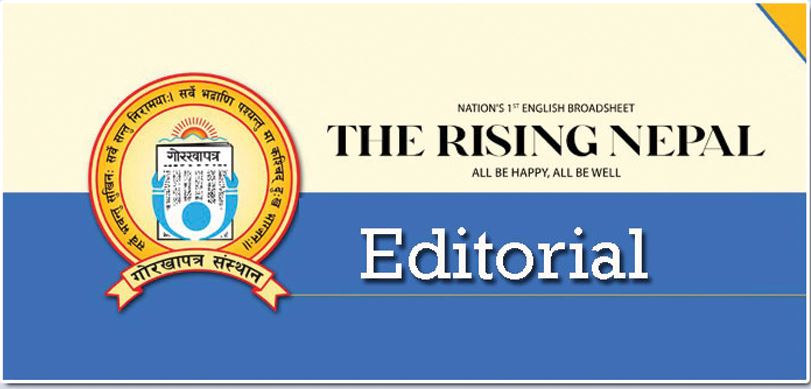- Monday, 8 September 2025
Limit Soaring Debt
Rising public debt bodes ill for a country ill-equipped to pay it back. There are countless examples of economies being crushed by the weight of unsustainably ballooning public debt. Although Nepal has so far avoided such an extreme scenario, consistently growing debt is indeed a cause for concern. The country's total outstanding public debt has increased to Rs. 2,611 billion as of mid-February. During the first seven months of the current fiscal year 2024/25, the total outstanding debt has increased by 7.27 per cent, with internal debt rising by 8.62 per cent and external by 6 per cent.
The total debt to GDP ratio is now 45.77 per cent, up from 42.73 per cent at the end of the fiscal year 2023/24. The dwindling value of Nepali currency against USD has added Rs. 36.59 billion to the debt burden over that period. The government has set a target of collecting additional Rs. 547 billion of loans to meet the budget deficit for the current fiscal year. It paid Rs.188.75 billion in debt servicing last fiscal. The debt servicing expenditure until mid-February is 3.31 per cent of the GDP. A total of Rs. 402.85 billion has been allocated for debt servicing in the current fiscal year.
Rising debt is bad for a country for several reasons. It can significantly stymie economic growth by crippling the government's ability to invest in essential services. It also increases interest rates and reduces investor confidence, potentially leading to currency devaluation, and in extreme cases, default. All these can act as a perfect storm to cause a deep economic crisis. The more a country owes, the less ability it has to respond to economic challenges and fund critical public programmes. High public debt can lead to lower economic growth and economic instability, making an economy too weak to withstand shocks. High budget deficit and inflation are other negative consequences.
The country had to go on binge borrowing to fund its post-2015 earthquake reconstruction. Then in 2020, when the COVID-19 pandemic brought virtually all economic activities to a standstill, massively shrinking government revenue, it had to resort to taking out further loans to cover its expenditure, further adding to its debt burden. To tackle the growing debt burden, experts say, the government needs to cut its wasteful spending and increase its revenue by stimulating the economy.
Keeping interest rates at a low level incentivises more and more people to borrow money from banks, injecting a flood of cash into the economy. Though raising taxes may also help, it also contributes to inflation by raising the prices of commodities. This deters consumers from making purchases, reducing government revenue. India has recently cut income taxes so that more people have disposable income to spend and drive up consumption. The more goods are consumed, the more steam an economy gains, and also the more a government gains in revenue.
Almost all countries have seen their public debt rise in the aftermath of the pandemic, with some finding themselves in debt-distressed situations. They had to turn to the likes of the International Monetary Fund (IMF) for urgent assistance. On the other hand, some countries have shown how prudent fiscal policy combined with high GDP growth can help reduce public debt to sustainable levels. We can take a leaf out of their book to keep our debt from soaring or even reducing it substantially.



-original-thumb.jpg)

-(1)-square-thumb.jpg)






-original-thumb.jpg)



